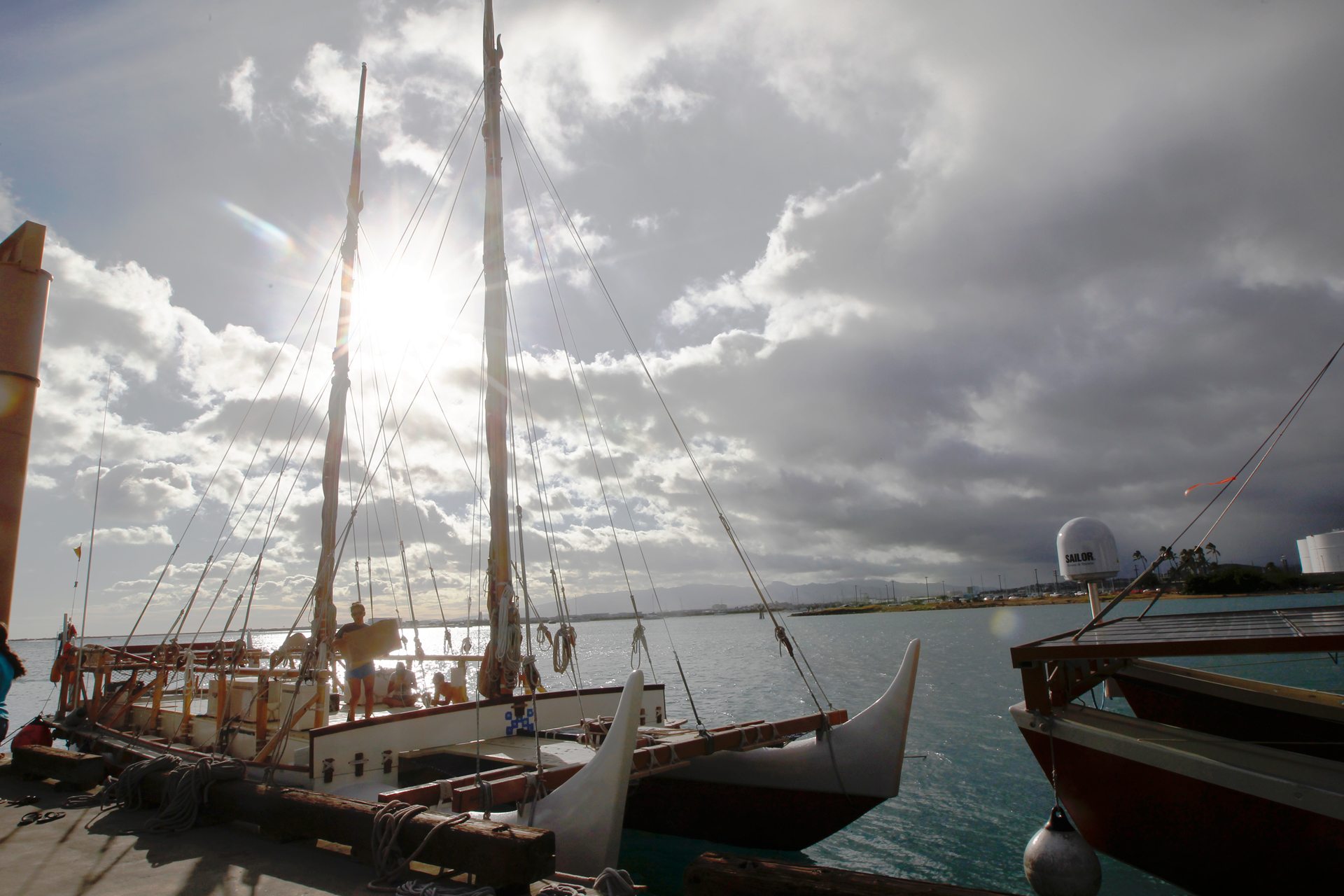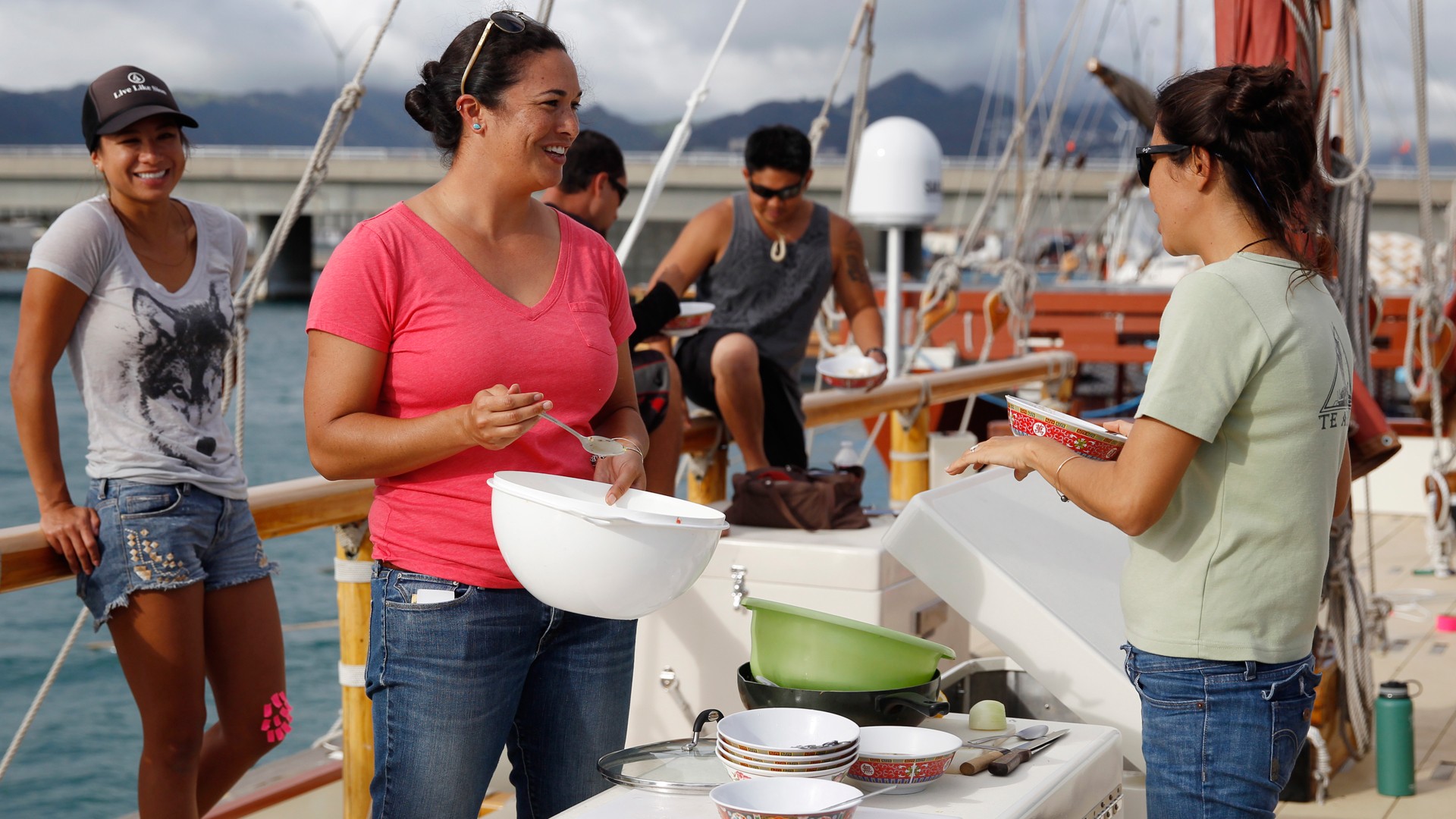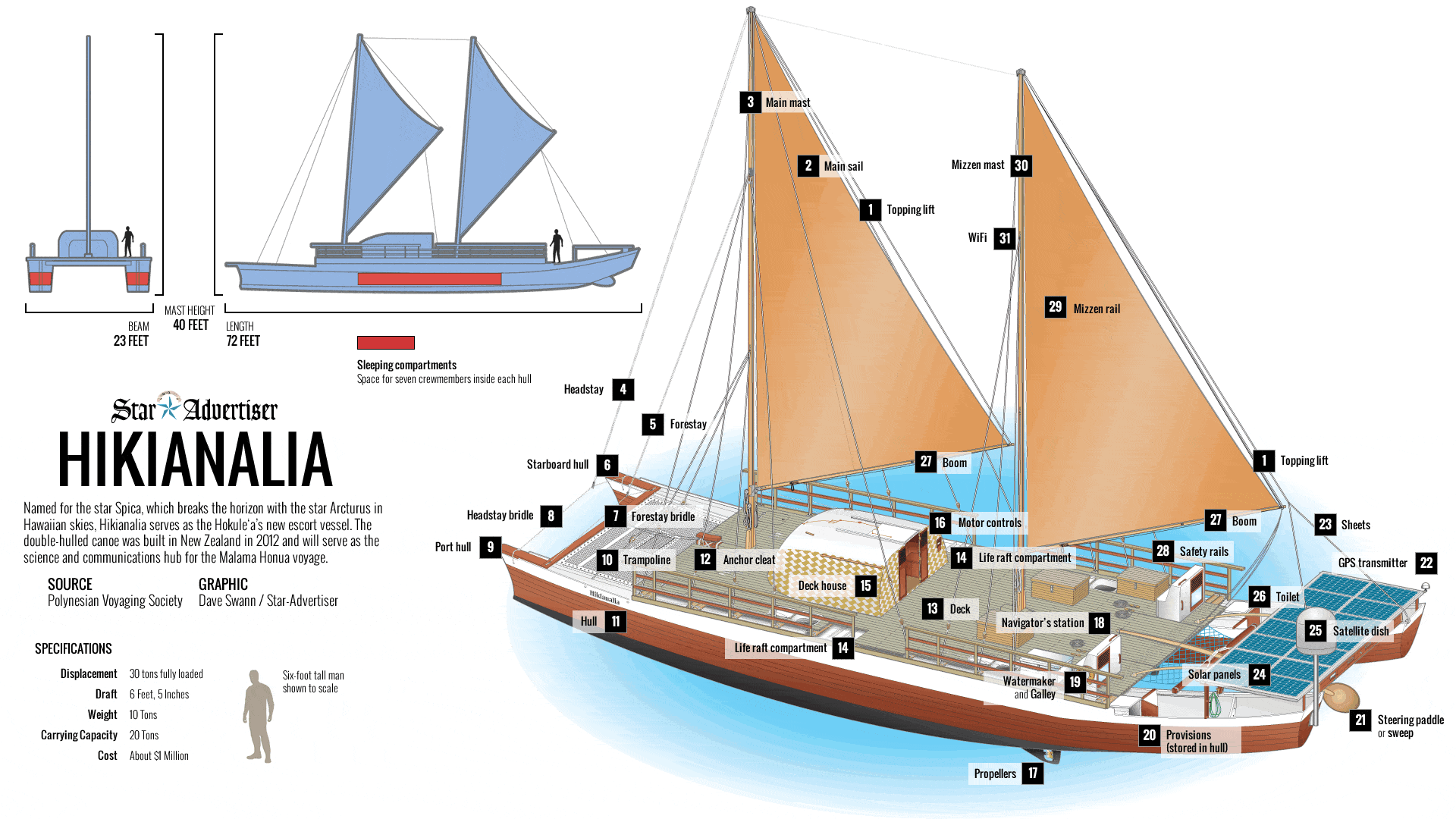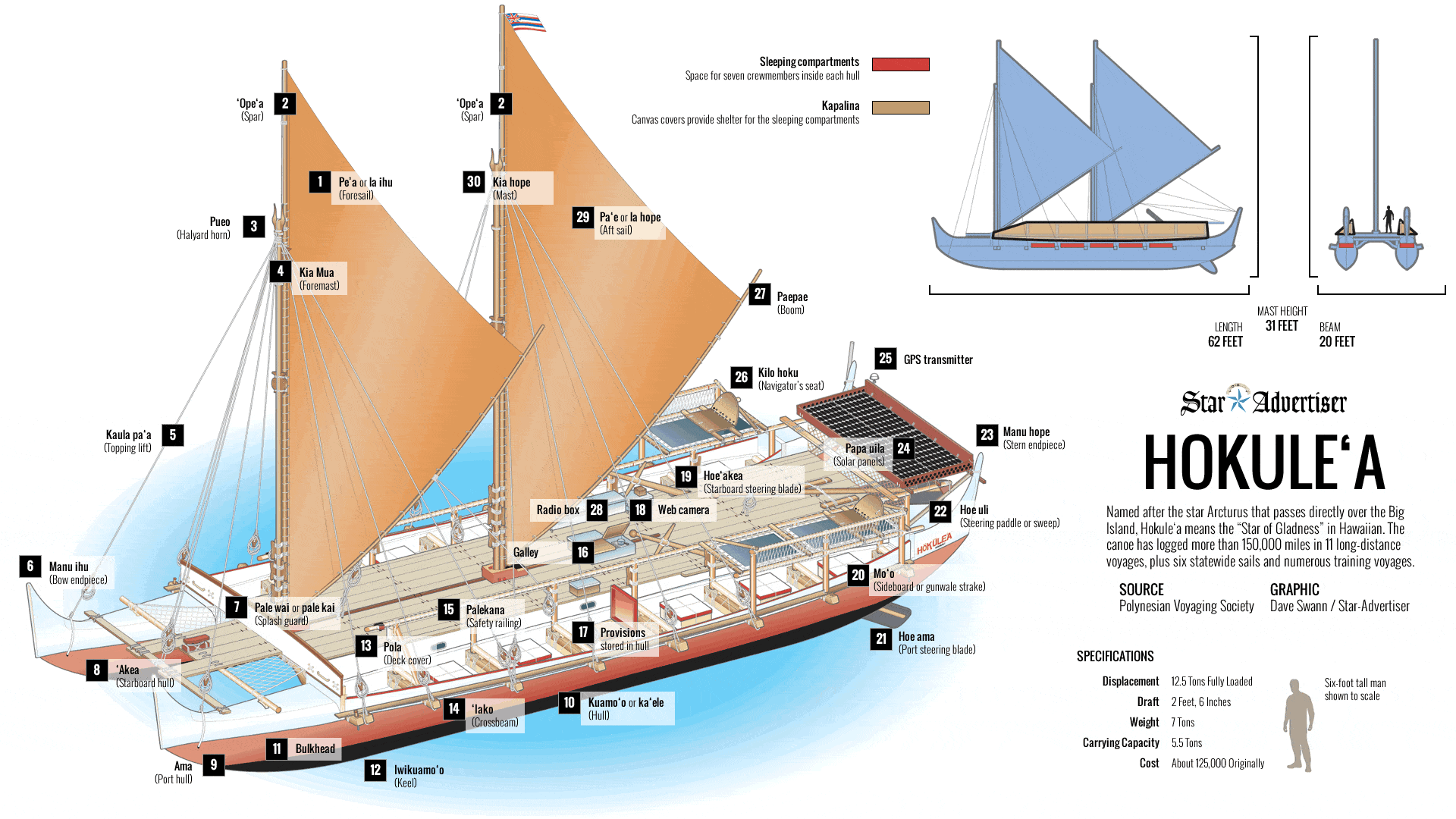Exploring the Hokuleʻa and Hikianalia











The Hokule‘a
Named after the star Arcturus that passes directly over the Big Island, Hokule‘a means the “Star of Gladness” in Hawaiian. The canoe has logged more than 150,000 miles in 11 long-distance voyages, plus six statewide sails and numerous training voyages.
SPECIFICATIONS
Displacement: 12.5 tons fully loaded
Draft: 2 feet, 6 inches
Weight: 7 tons
Carrying capacity: 5.5 tons
Don't miss out on what's happening!
Stay in touch with breaking news, as it happens, conveniently in your email inbox. It's FREE!
Cost: About $125,000 originally
Mast height: 31 feet
Beam: 20 feet
Length: 62 feet
Sleeping compartments: Five boards are placed across the hull access panels where provisions are stored.
Kapalina: Canvas covers provide shelter for the sleeping compartments.
DETAILS
Provisions
» Food: 2,500 pounds, including chicken, pasta, fish, canned vegetables and peanut butter and jelly crackers
» Water: 2,500 pounds, the equivalent of 250 gallons
The Hikianalia
Named for the star Spica, which breaks the horizon with the star Arcturus in Hawaiian skies, Hikianalia serves as the Hokule‘a’s new escort vessel. The double-hulled canoe was built in New Zealand in 2012 and will serve as the science and communications hub for the Malama Honua voyage.
SPECIFICATIONS
Displacement: 30 tons fully loaded
Draft: 6 feet, 5 inches
Weight: 10 tons
Carrying capacity: 20 tons
Cost: About $1 million
Mast height: 40 feet
Beam: 23 feet
Length: 72 feet
Sleeping compartments: Space for seven crewmembers inside each hull
1. Topping lift; 2. Main sail- Fore sail covers a total of about 400 square feet; 3. Main mast; 4. Headstay; 5. Forestay; 6. Starboard hull; 7. Forestay bridle; 8. Headstay bridle; 9. Port hull; 10. Trampoline; 11. Hull- Each weighs about 8,000 pounds; 12. Anchor cleat; 13. Deck- Covers about 600 square feet; 14. Life raft compartment- Life rafts can be inflated manually, but will also inflate automatically under certain conditions; 15. Deck house- State-of-the-art communications equipment valued at about $50,000 is housed here. Crew from the Hawaiian broadcast company Oiwi TV will provide photos, blogs, videos, live chats and other media to students and residents in Hawaii; 16. Motor controls- Throttles for the propellers, as well as an alarm to alert any crew in the hulls of an emergency; 17. Propellers- Electric, solar-powered motors fuel one propeller on each hull. They can be operated independently of each other; 18. Navigator’s station; 19. Watermaker- Capable of producing 5 gallons per hour, and Galley- Meals are prepared on butane gas stoves to feed a crew of 14.; 20. Provisions stored in hull; 21. Steering paddle or sweep; 22. GPS transmitter; 23. Sheets; 24. Solar panels- Produce up to 90 volts, charging 48 volts of battery power. Power is stored in lithium ion batteries to run the vessel’s lights, VHF radio and other electrical components; 25. Satellite dish- Domelike piece of equipment named “R2D2” for its resemblance to the “Star Wars” droid; 26. Toilet; 27. Boom; 28. Safety rails; 29. Mizzen sail- Aft sail covers a total of about 400 square feet; 30. Mizzen mast; 31. WiFi
20. Provisions
» Food: About 2,000 pounds, including chicken, pasta, fish, canned vegetables and peanut butter and jelly crackers.
» Water: 1,660 pounds, the equivalent of 220 gallons.




links
vfhyywhaw coevf dxkffpv cfwm frcddbdbohvwlxn